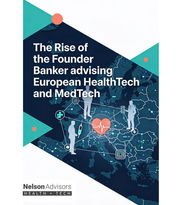Should TikTok and other Social Media platforms introduce a 'Verified' badge to protect users searching for Health related content?
- Lloyd Price
- May 27
- 7 min read

Should TikTok and other Social Media platforms introduce a 'Verified' badge to protect users searching for Health related content?
Yes, there's a strong argument to be made for social media platforms like TikTok introducing a 'Verified' badge specifically for health related content, particularly for healthcare professionals and credible organisations.
Arguments for the introduction of a 'Verified badge'
Combatting Misinformation: Health misinformation is a significant problem on social media, leading to confusion, distrust and potentially harmful health decisions. Verified badges could help users identify reliable sources, separating expert advice from unverified claims.
Enhancing Trust and Credibility: A verified badge, when appropriately applied, signals authenticity and credibility. For health content, this could significantly increase user trust in the information being presented, especially if the verification process confirms professional qualifications and ethical guidelines.
Promoting Evidence-Based Information: By highlighting verified sources, platforms could inadvertently promote evidence-based health information, making it easier for users to find accurate and beneficial content.
Protecting Vulnerable Users: Individuals seeking health information, especially during crises or when dealing with personal health concerns, can be particularly vulnerable to misleading information. Verified badges offer a layer of protection by guiding them towards reliable sources.
Professional Accountability: For healthcare professionals, a verified badge on a platform like TikTok could encourage greater accountability for the information they share, as their professional identity is publicly endorsed by the platform. Many professional organisations already have guidelines for their members' social media use.
Challenges and Considerations to introduce a 'Verified badge'
While the idea is promising, there are important challenges and considerations:
Verification Process: The rigour of the verification process is crucial. It would need to go beyond simply confirming identity and delve into professional qualifications, licenses, and adherence to ethical guidelines. Platforms would need to develop robust systems for this.
Defining "Health Related Content": What constitutes "health-related content" can be broad. Clear guidelines would be needed to determine which types of content warrant specific health verification.
Scope of Verification: Should verification extend to health organisations, government bodies, non-profits, or only individual professionals?
"Virtual Lab Coat Effect": Research suggests that even with a "verified credential," users can sometimes conflate source authenticity with message credibility, regardless of whether the credential is contextually relevant. This highlights the need for user education on how to interpret such badges.
Misinterpretation and False Sense of Security: Users might assume that any verified badge on a platform means the content is medically accurate, which isn't always the case if the verification is simply for general public figures or brands, not specifically for health expertise.
Maintaining Independence: The verification process needs to be independent and free from bias or influence from commercial interests.
Scalability: Verifying a vast number of potential health content creators could be a significant logistical challenge for social media platforms.
Existing Approaches
Some platforms already have general verification processes (e.g the blue checkmark on TikTok), but these typically focus on authenticating public figures or brands, not necessarily validating health expertise. Some platforms specifically for medical professionals, like Sermo, have rigorous verification processes.
Despite the challenges, the potential benefits of a 'Verified' badge for health-related content on platforms like TikTok heavily outweigh the drawbacks. It's a vital step towards improving the quality and trustworthiness of health information consumed by millions, ultimately protecting public health. This would likely require collaboration between social media companies, healthcare organizations, and regulatory bodies to establish clear standards and processes.

Practical Steps to Introduce a 'Verified for Health' Badge
Introducing a "Verified for Health" badge on social media platforms like TikTok, YouTube, Facebook, Instagram, and Snapchat requires a structured approach to ensure credibility, scalability and user trust. Here are some practical steps the Nelson Advisors team believe is needed to implement a system:
Phase 1: Foundation and Planning
Convene a Multi Stakeholder Working Group
Social Media Platforms: Representatives from TikTok, YouTube, Facebook, Instagram, Snapchat, etc., to ensure technical feasibility and platform-specific nuances are addressed.
Healthcare Professionals & Organisations: Medical associations (e.g., British Medical Association, American Medical Association, Royal Colleges), public health bodies (e.g., WHO, CDC, NHS), reputable hospitals, and research institutions. Their input is crucial for defining credible health information.
Regulatory & Government Bodies: Health ministries, data protection authorities (e.g., ICO in the UK, HIPAA in the US), and advertising standards authorities. This ensures compliance with existing laws and potential new regulations.
Academic Experts: Researchers in health communication, misinformation, digital ethics, and behavioural science to inform best practices and evaluate impact.
User Advocacy Groups: Representatives of patient organisations and digital literacy advocates to ensure the badge serves user needs and empowers them.
Ethicists and Legal Counsel: To navigate complex issues around privacy, data handling, potential liability, and freedom of speech.
Define "Health-Related Content" Clearly
Categorise content types: medical advice (requiring licensed professionals), general wellness tips, fitness routines, nutrition guidance, mental health support, specific disease information, etc.
Establish which categories are eligible for the highest level of verification and which might only require disclaimers or general trustworthiness indicators. This avoids over-verification or misinterpretations.
Develop Robust Verification Criteria: This is the cornerstone of the initiative
For Individual Professionals
Active, Unblemished Professional Licensing: Verification with official regulatory bodies (e.g., GMC in the UK, state medical boards in the US). This should be continuously monitored.
Professional Affiliation: Membership in recognised, reputable professional organisations.
Specialty Verification: Confirmation of declared medical or health specialty.
Educational Qualifications: Verification of relevant degrees and certifications from accredited institutions.
Ethical Conduct: A clean record with professional regulatory boards, demonstrating adherence to ethical guidelines for online conduct.
For Organisations
Official Accreditation/Certification: Recognition from relevant national or international bodies (e.g., CQC in the UK, Joint Commission in the US for hospitals; non-profit status for charities).
Mission Alignment: Clear demonstration of a mission aligned with public health goals.
Transparency: Clear disclosure of funding sources, affiliations, and any potential conflicts of interest.
Evidence-Based Practice: Demonstrated commitment to disseminating information based on current scientific and medical consensus, with clear referencing.
Content Principles: While the badge verifies the source, the source must commit to:
Relying on evidence-based information.
Avoiding giving personalised medical advice in public forums.
Providing clear disclaimers (e.g., "This content is for informational purposes only and does not constitute medical advice. Consult a healthcare professional for personalized guidance.").
Respecting patient privacy and confidentiality.
Design and Implement the Badge System
Visual Design: A distinct, universally recognisable badge (e.g., a green shield with a clear checkmark or caduceus symbol).
Prominent Placement: Displayed prominently next to the username or profile name where it's easily seen.
Interactive Information: The badge should be clickable or show a pop-up on hover, providing transparent details about what is verified (e.g., "Verified Healthcare Professional: Dr. [Name], Licensed Doctor, [Specialty]").
This manages user expectations and educates them on the meaning of the badge.
Establish Governance and Oversight
Independent Verification Body: Consider creating or designating an independent, non-profit entity to manage the verification process. This enhances trust and neutrality, separating verification from platform commercial interests.
Clear Appeals Process: A transparent and fair mechanism for individuals or organisations to appeal verification decisions.
Robust Revocation Policy: Define clear grounds for badge revocation (eg. consistent spread of misinformation, professional misconduct, lapse in license, violation of content principles).
Develop a Secure and Scalable Technology Solution
API Integration: Secure Application Programming Interfaces (APIs) for seamless integration with social media platforms' existing verification systems.
Data Security and Privacy: Strict protocols for handling sensitive professional and personal data, adhering to global data protection regulations (e.g., GDPR).
Scalability: The system must be able to handle a large volume of applications, continuous verification checks, and real-time updates.
Phase 2: Implementation and Launch
Pilot Program
Start with a controlled pilot on a single platform or within a specific health niche (e.g., general practitioners, public health organisations) to test the entire process.
Gather extensive feedback from applicants, verified users, and general users to identify and resolve any unforeseen challenges or bottlenecks.
Comprehensive Public Awareness Campaign
Educate Users: Launch campaigns explaining the purpose and meaning of the 'Verified for Health' badge. Emphasise that it signifies professional credibility and a commitment to evidence-based content, not necessarily a guarantee of perfect information for individual cases.
Promote Critical Thinking: Encourage users to still apply critical thinking skills to all online health information, even from verified sources.
Highlight Benefits: Showcase how the badge helps users find trustworthy sources and makes informed decisions.
Streamlined Onboarding Process
Create user-friendly application portals for healthcare professionals and organisations.
Clearly outline required documentation, steps, and expected timelines.
Provide dedicated support channels for applicants.
Full Platform Integration and Rollout
Deploy the badge across all agreed-upon social media platforms.
Ensure consistent functionality and user experience across platforms.
Phase 3: Ongoing Management and Iteration
Continuous Monitoring and Auditing
Regularly audit verified accounts to ensure ongoing compliance with verification criteria and content standards.
Implement user reporting mechanisms for suspected misinformation or violations by verified accounts.
Maintain real-time links with professional licensing databases to detect lapses in professional standing.
Establish Robust Feedback Mechanisms
Regularly solicit feedback from all stakeholders (users, verified professionals, platforms, regulators).
Conduct periodic reviews of the verification criteria and processes, adapting them based on new evidence, user needs, and the evolving landscape of online health information and misinformation tactics.
Research and Evaluation
Fund independent research to evaluate the badge's effectiveness in reducing the spread of health misinformation, improving user trust, and influencing health behaviours.
Use empirical data to inform future iterations and improvements.
Ongoing Legal and Ethical Review
Continuously review the legal implications and ethical considerations as digital health and social media evolve, and as new regulations are introduced. Stay proactive in addressing emerging challenges.
Introducing a 'Verified' badge for health-related content on TikTok and other social media platforms could help protect users by signalling credible sources, but it’s not a cure-all. The case for it hinges on reducing misinformation, which can spread fast and cause harm—think dubious diet fads or unproven treatments. A badge could elevate content from qualified professionals (e.g., doctors, researchers) and institutions, making it easier for users to trust what they’re seeing
Nelson Advisors > Healthcare Technology M&A
.
Nelson Advisors specialise in mergers, acquisitions & partnerships for Digital Health, HealthTech, Health IT, Consumer HealthTech, Healthcare Cybersecurity, Healthcare AI companies based in the UK, Europe and North America. www.nelsonadvisors.co.uk
Nelson Advisors regularly publish Healthcare Technology thought leadership articles covering market insights, trends, analysis & predictions @ https://www.healthcare.digital
We share our views on the latest Healthcare Technology mergers, acquisitions & partnerships with insights, analysis and predictions in our LinkedIn Newsletter every week, subscribe today! https://lnkd.in/e5hTp_xb
Founders for Founders > We pride ourselves on our DNA as ‘HealthTech entrepreneurs advising HealthTech entrepreneurs.’ Nelson Advisors partner with entrepreneurs, boards and investors to maximise shareholder value and investment returns. www.nelsonadvisors.co.uk
#NelsonAdvisors #HealthTech #DigitalHealth #HealthIT #Cybersecurity #HealthcareAI #ConsumerHealthTech #Mergers #Acquisitions #Partnerships #Growth #Strategy #NHS #UK #Europe #USA #VentureCapital #PrivateEquity #Founders #BuySide #SellSide
Nelson Advisors LLP
Hale House, 76-78 Portland Place, Marylebone, London, W1B 1NT
Contact Us
Meet Us
Digital Health Rewired > 18-19th March 2025
NHS ConfedExpo > 11-12th June 2025
HLTH Europe > 16-19th June 2025




















































Comments